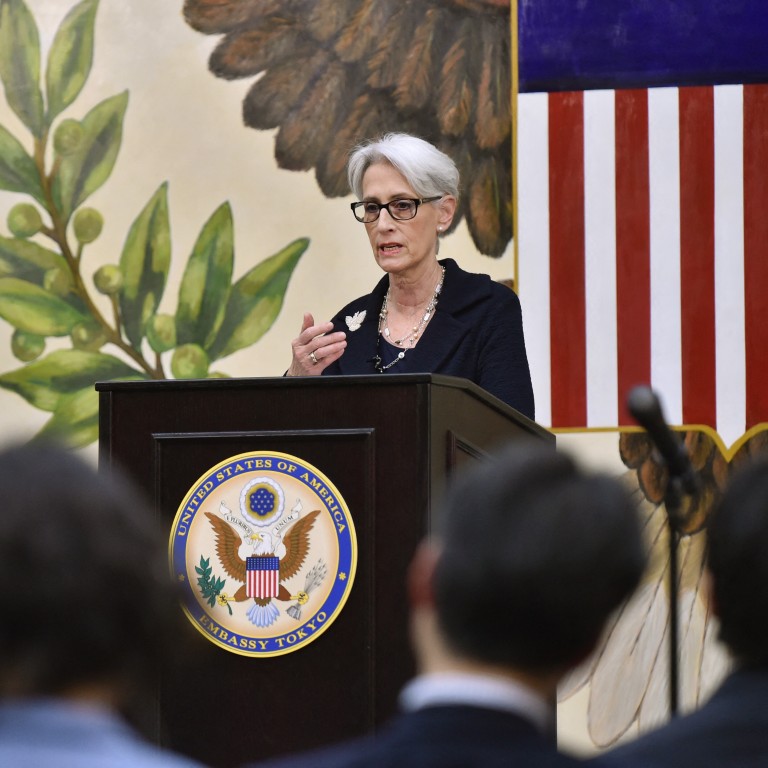
Exclusive | China-US relations: superpowers jostle for position of strength in planning senior official’s visit
- A proposed trip to Tianjin by US deputy secretary of state Wendy Sherman depends on guaranteed access to power and protocols being followed
- Negotiations could be complicated with Washington expected to impose new sanctions on Chinese officials and to warn US firms operating in Hong Kong
Sources said plans for Sherman, the second most senior official in the State Department, to visit China following her trips to East Asia were still on. The American side wants to ensure she has direct access to top decision makers, according to one of the sources familiar with the arrangement.
“The Chinese and American sides are currently discussing details of the meeting. The meeting is still on for now,” another source said.
The quibbling over details reflects Washington’s belief that it needs to come to the meeting on a strong footing with Beijing. While the Chinese side is making necessary preparations for the meeting to take place, the two sides would jointly announce her trip only when all details were finalised, the first source said.
To show China’s sincerity, Foreign Minister Wang Yi would also receive Sherman. But the American side wants Sherman to have greater access to President Xi Jinping’s inner circle.

In an event at Stanford University in May, Kurt Campbell, the White House’s Indo-Pacific policy director, expressed frustration that the US had not been able to talk to Xi’s confidantes.
The negotiation could be further complicated with Washington expected to impose fresh sanctions on a number of Chinese officials over Hong Kong and to issue a warning to US businesses operating in the city about allegedly deteriorating conditions. Beijing will certainly respond in kind if that happens. This could chill ties even further.
China and US spar over multilateralism at G20 meeting
But the Chinese side refused the request and offered Austin a meeting with General Wei Fenghe, the Defence Minister, who ranks behind Xu in the military hierarchy. The meeting did not proceed because the two sides could not reach an agreement.
Both occasions show the importance attached to diplomatic protocols for the two rivals – neither side wants to appear weak or disadvantaged when coming to a meeting.
Xi and Biden will both attend the Apec forum in New Zealand on Friday but their virtual attendance means there will be no chance for them to meet at a sideline event. There is speculation they may hold talks during the G20 meeting in Rome in October – whether Sherman visits China will be the most telling sign if that might happen.
Both Beijing and Washington have been jostling to secure the upper hand as their rivalry grows. The US said it would engage China from a position of strength and up the ante on rallying its allies to contain China while Beijing insisted it would not back down and urged Washington to show sincerity.
Beijing will not engage in intense ideological war with the US: expert
It is not clear if the Taiwan issue will be discussed. Sherman will then travel to Seoul and hold talks with Korean officials on issues including pandemic relief and the post Covid-19 economic recovery before going to Ulaanbaatar.

